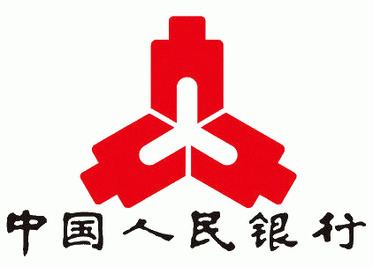Established December 1, 1948 Reserves US$3.201 trillion Interest on reserves 3.5% Central bank of China | Governor Zhou Xiaochuan Bank rate 6.0% President Zhou Xiaochuan Reserve 3.201 trillion USD Founded 1 December 1948 | |
 | ||
Preceded by Central Bank of the Republic of China | ||
People s bank of china yuan will remain strong
The People's Bank of China (PBC or PBOC, Chinese: 中国人民银行) is the central bank of the People's Republic of China with the power to carry out monetary policy and regulate financial institutions in mainland China. The People's Bank of China has more financial assets than any single public & financial institution in the world.
Contents
- People s bank of china yuan will remain strong
- History
- Management
- Structure
- Microfinance
- Financial inclusion
- Interest rates
- Reserve Requirement Ratio RRR
- Foreign exchange reserves
- References
History
The bank was established on December 1, 1948, based on the consolidation of the Huabei Bank, the Beihai Bank and the Xibei Farmer Bank. The headquarters was first located in Shijiazhuang, Hebei, and then moved to Beijing in 1949. Between 1950 and 1978 the PBC was the only bank in the People's Republic of China and was responsible for both central banking and commercial banking operations. All other banks within Mainland China such as the Bank of China were either organized as divisions of the PBC or were non-deposit taking agencies.
In the 1980s, as part of economic reform, the commercial banking functions of the PBC were split off into four independent but state-owned banks and in 1983, the State Council promulgated that the PBC would function as the central bank of China. Mr. Chen Yuan was instrumental in modernizing the bank in the early 1990s. Its central bank status was legally confirmed on March 18, 1995 by the 3rd Plenum of the 8th National People's Congress. In 1998, the PBC underwent a major restructuring. All provincial and local branches were abolished, and the PBC opened nine regional branches, whose boundaries did not correspond to local administrative boundaries. In 2003, the Standing Committee of the Tenth National People's Congress approved an amendment law for strengthening the role of PBC in the making and implementation of monetary policy for safeguarding the overall financial stability and provision of financial services.
The People's Bank of China (PBC) is the largest central bank at US$3.201 trillion.
Management
The top management of the PBC are composed of the governor and a certain number of deputy governors. The governor of the PBC is appointed into or removed by the National People's Congress or its Standing Committee. The candidate for the governor of the PBC is nominated by the Premier of the People's Republic of China approved by the National People's Congress. When the National People's Congress is in adjournment, the Standing Committee sanctions the candidacy for the governor of the PBC. The deputy governors of the PBC are appointed to or removed from office by the Premier of the State Council.
The PBC adopts a governor responsibility system under which the governor supervises the overall work of the PBC while the deputy governors provide assistance to the governor to fulfill his or her responsibility.
The current governor is Zhou Xiaochuan:. Deputy governors of the management team include: Yi Gang, Wang Huaqing, Pan Gongsheng, Fan Yifei, Guo Qingping, Zhang Xiaohui, and Yang Ziqiang. Former top-level managers include: Ms. Hu Xiaolian, Liu Shiyu, Li Dongrong and Ms. Jin Qi.
Structure
The PBC has established 9 regional branches, one each in Tianjin, Shenyang, Shanghai, Nanjing, Jinan, Wuhan, Guangzhou, Chengdu and Xi'an, 2 operations offices in Beijing and Chongqing, 303 municipal sub-branches and 1809 county-level sub-branches.
It has 6 overseas representative offices (PBC Representative Office for America, PBC Representative Office (London) for Europe, PBC Tokyo Representative Office, PBC Frankfurt Representative Office, PBC Representative Office for Africa, Liaison Office of the PBC in the Caribbean Development Bank).
The PBC consists of 18 functional departments (bureaus) as below:
The following enterprises and institutions are directly under the PBC:
Microfinance
Financial inclusion
The PBOC is active in promoting financial inclusion policy and a member of the Alliance for Financial Inclusion.
Interest rates
Previously, interest rates set by the bank were always divisible by nine, instead of by 25 as in the rest of the world. However, this is no longer applied since the central bank started changing rates by 0.25 percentage points on October 19, 2010 (which was a rate increase).
PBC latest interest rate changes
Reserve Requirement Ratio (RRR)
PBC latest Reserve Requirement Ratio changes
Foreign-exchange reserves
Foreign-exchange reserves from 2004
